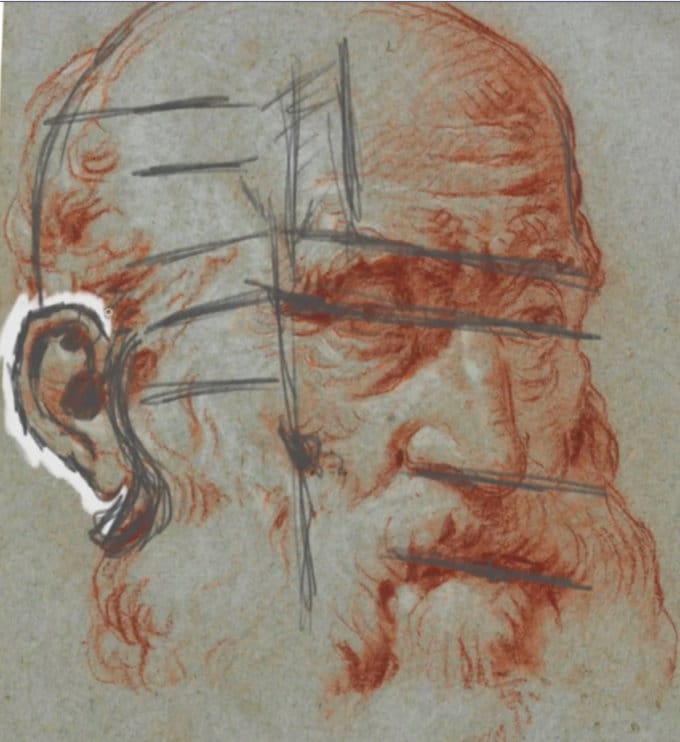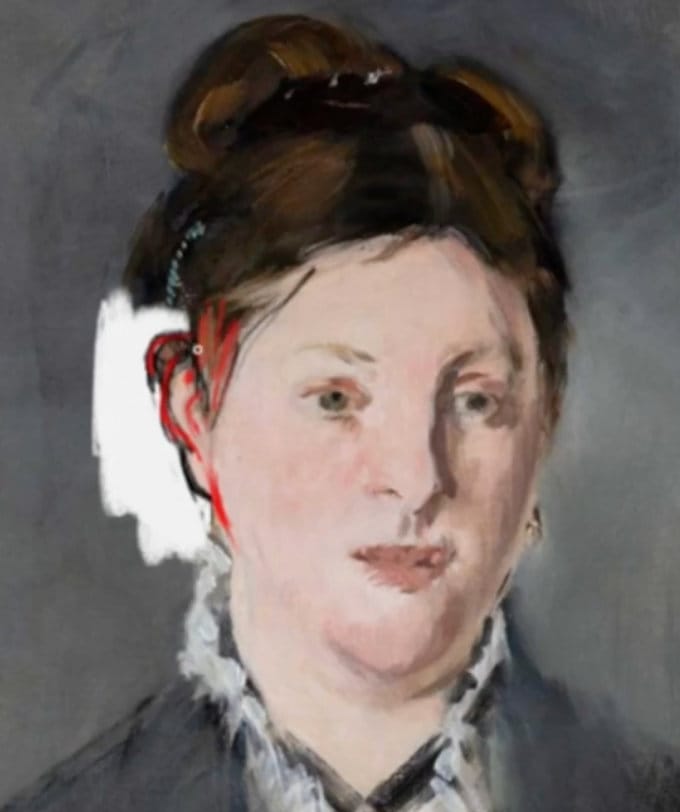Master Ear Analysis – Form, Rhythm, and Staging
Explore how Tiepolo and Manet used rhythm, structure, and light to design the ear. Learn to balance anatomy with artistic simplicity.

To wrap up the ear section, we’re looking at how artists like Tiepolo and Manet handled form, rhythm, and staging. By this point, you’ve seen how different masters simplify, connect, or understate the ear and now we’ll see how they balance realism with design.
This lesson is part of How to Draw the Head Course.
Tiepolo’s Expressive Ear Structure
The Tiepolo drawing shows everything we’ve studied brought together, structure, rhythm and flow.
You can see the outer rim curling back into itself, the inner rim bulging forward, and the subtle shading that defines which plane sits on top.
The ear connects naturally to the head, the beard overlaps in front, helping push the ear to the side plane. Tiepolo’s rhythm of angular planes meeting curved forms gives the drawing energy and personality. It’s a great reminder that structure and design can coexist beautifully.

Manet’s Elegant Simplicity
Manet’s ear is quiet but deliberate. He doesn’t spell out the anatomy, instead, he uses light, edge, and tonal staging.
Notice how the outer tube fades into hair, while the inner rim briefly appears with a soft red tone. That little shift is enough to suggest depth and direction.
The sideburn and cheek overlap tell you exactly where the ear sits behind the side plane, next to the skull, connected but understated. This is form through implied rhythm, not detailed rendering.

Lessons from Both
From Tiepolo we learn how to model complexity with energy and contrast.
From Manet we learn how to suggest form with restraint and staging.
Together, they show that ear drawing isn’t just anatomy, it’s design. Each artist decides what to reveal and what to leave unsaid.
Practice Tip
Create one study inspired by each approach:
- A Tiepolo-style ear using expressive lines and strong contour flow.
- A Manet-style ear using subtle value and minimal edges.
Compare them side by side and ask yourself which feels more natural for your own style.
Course Navigation
Previous Lesson: Master Ear Studies II: Simplicity and Placement
Next Lesson: Ear Drawing Assignment and Practice Reel
Head Drawing Hub: Complete Head Drawing Course
Continue Learning
If you enjoyed this hand drawing course, explore even more lessons on our Free Drawing Tutorials & Courses Hub — including the complete How to Draw – Beginner’s Course.
Want new tutorials delivered to your inbox? Subscribe here and get free lessons, tips, and inspiration sent directly to you.




